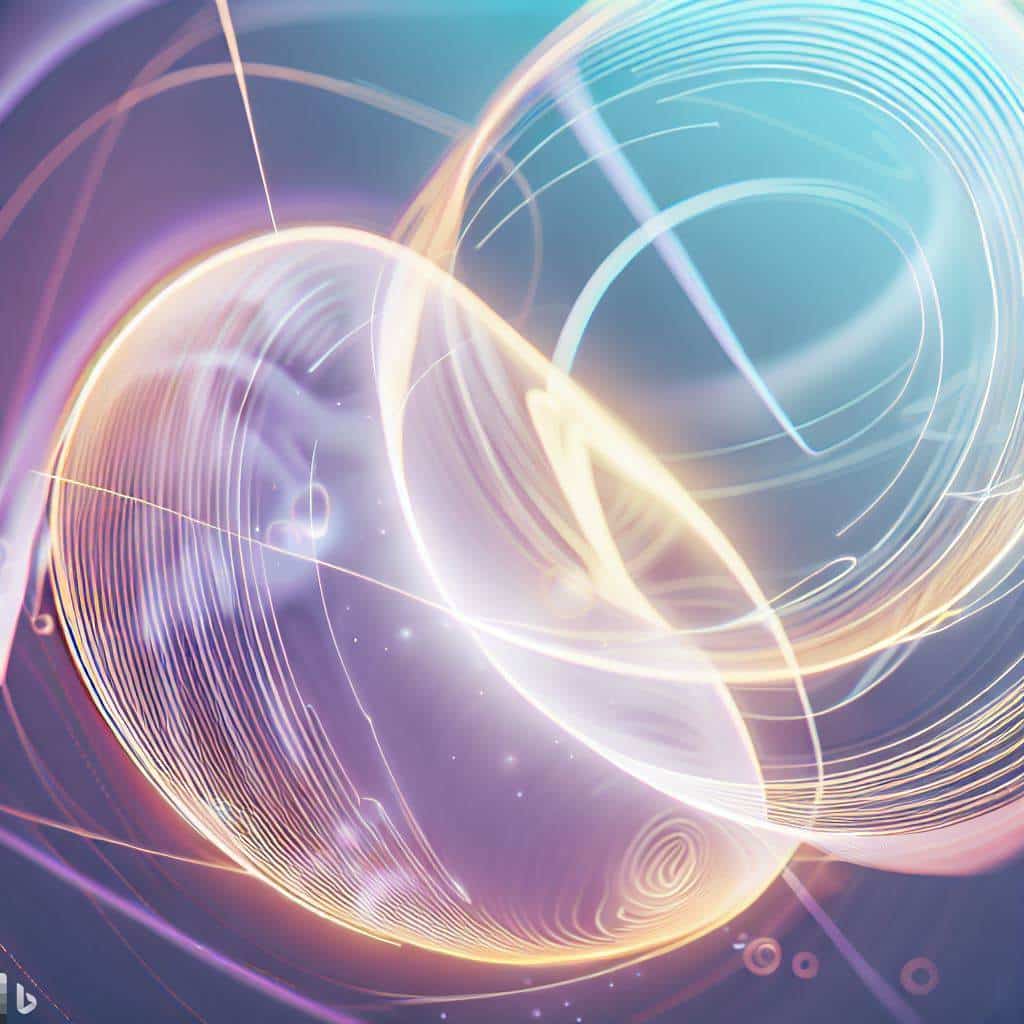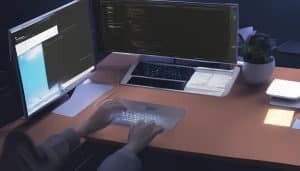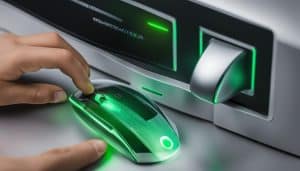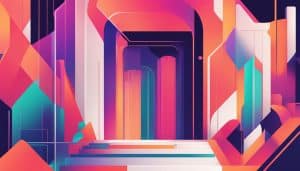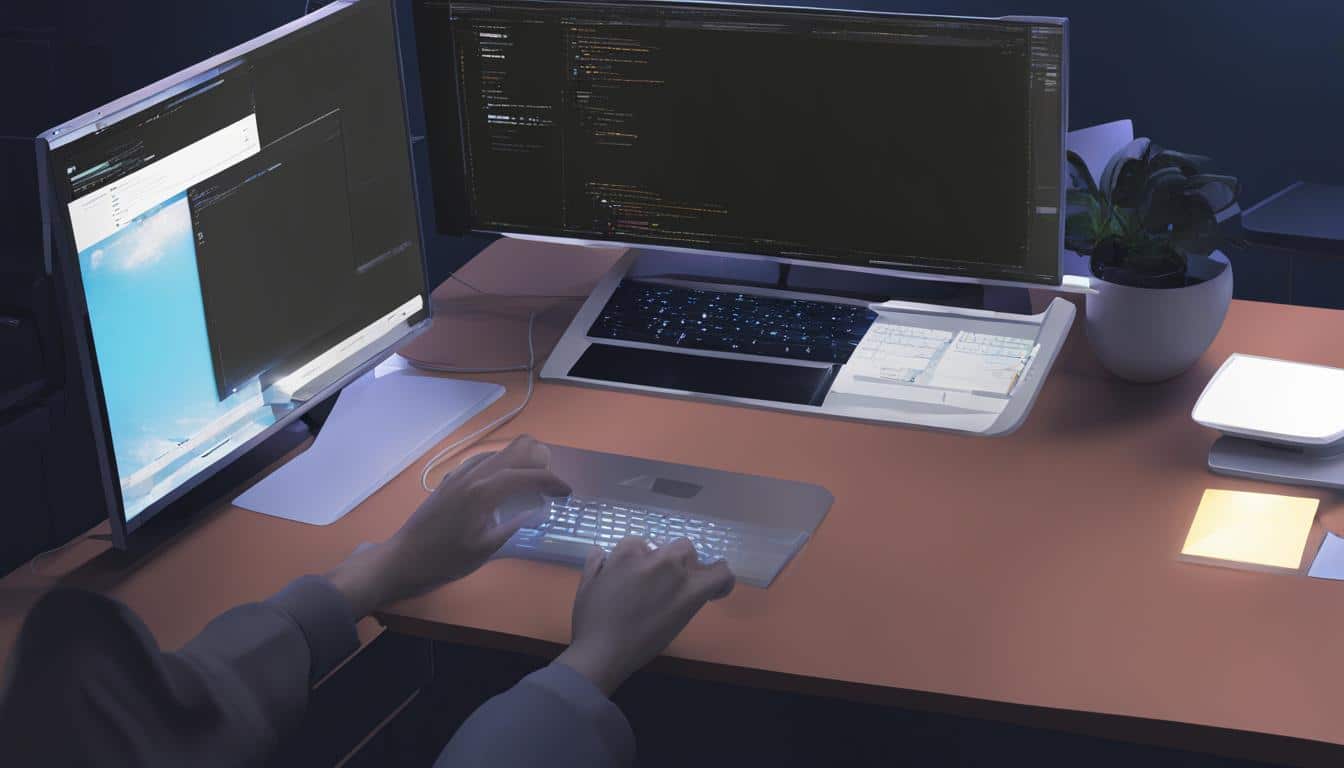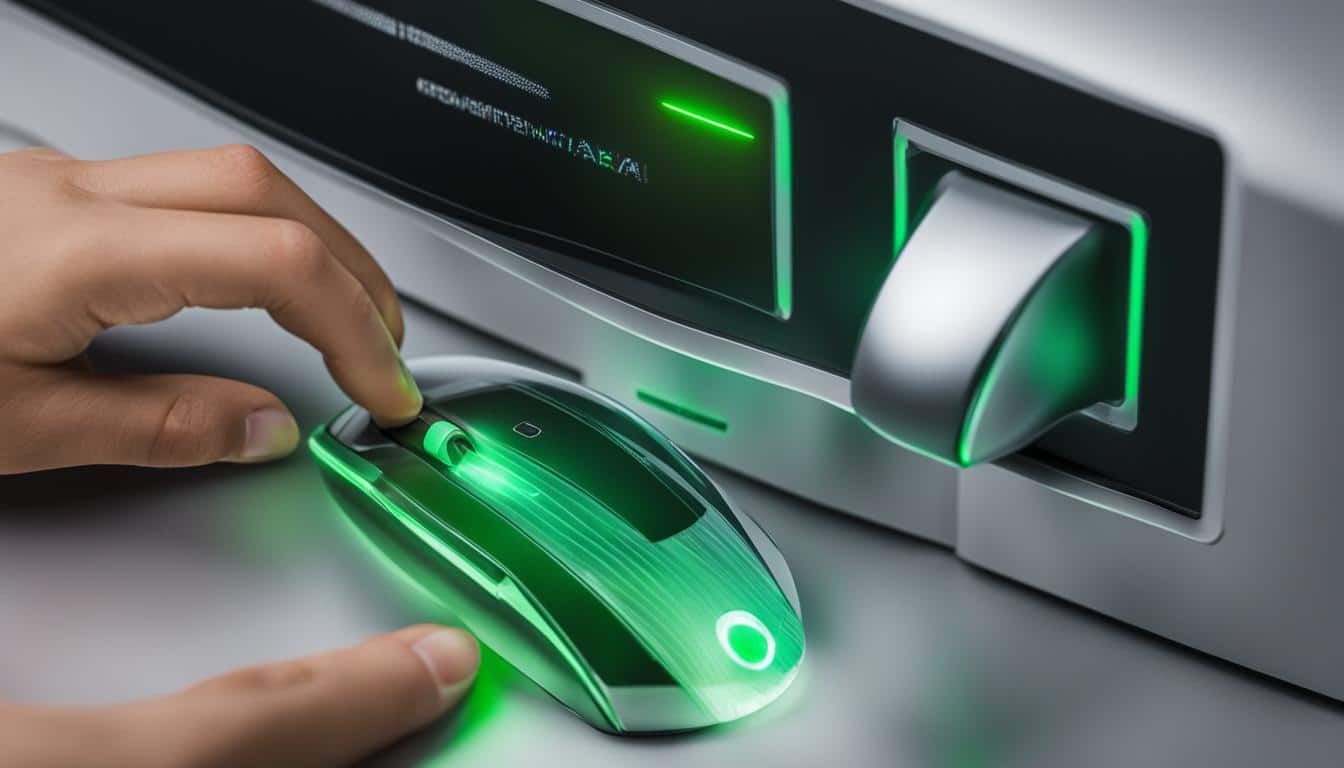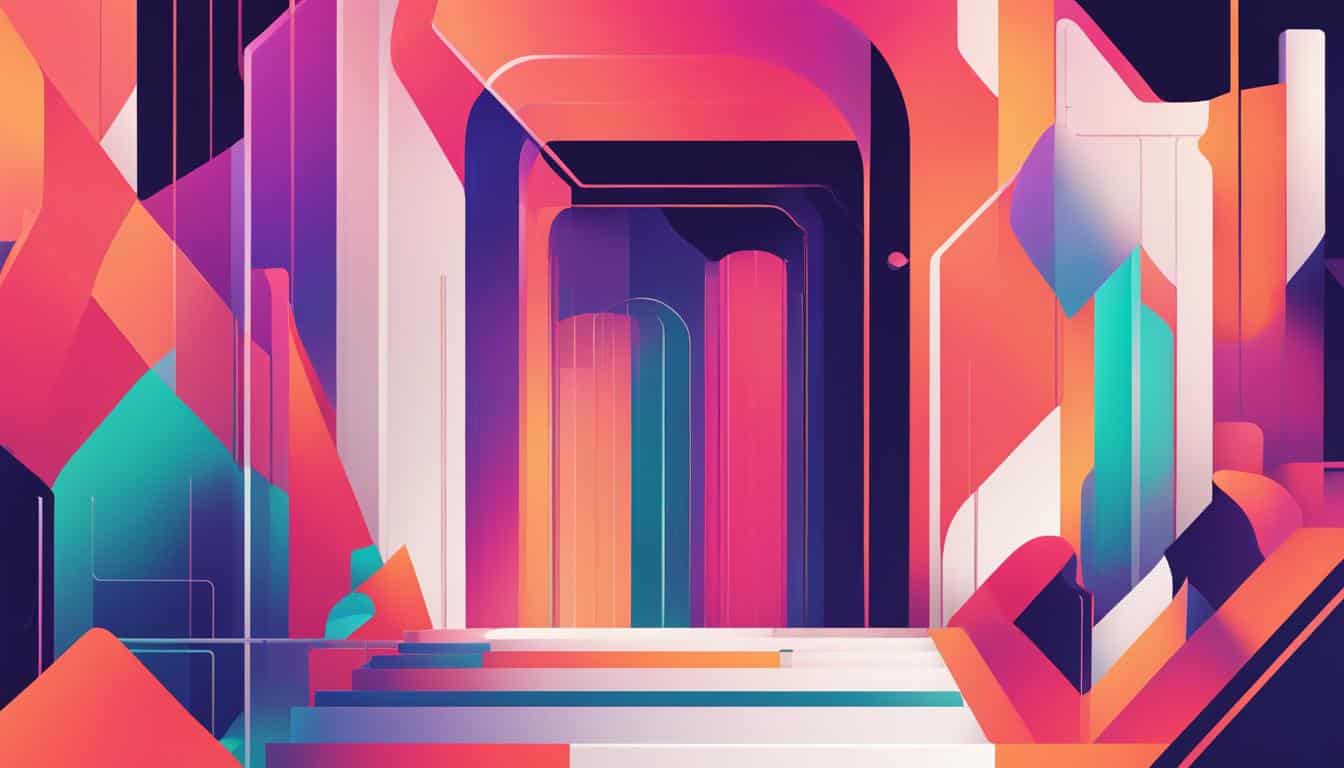Differences between digital art and traditional art
A comparison of digital and traditional art has been a big discussion. Let’s check out the differences.
Digital vs Traditional Art Table
| Category | Digital Art | Traditional Art |
| Tools used | Digital tools (e.g. graphic tablets, software) | Physical tools (e.g. brushes, canvas, paints) |
| Techniques used | Digital techniques (e.g. layering, blending, filters) | Manual techniques (e.g. shading, blending with hands or brushes) |
Note: This list is not exhaustive.
Both digital and traditional art have their own advantages. Digital art offers more editing options and brush textures. Whereas, traditional media output may have a more tangible feel due to the physicality of colors.
A painter friend of mine took interest in digital painting during lockdown. Initially she found it difficult to switch from manual to digital work. She was confused by effects that can be achieved with one stroke of paint being replaced by layers digitally. However, after a few weeks of practice she got a hold of her new toolkit.
Digital art might have cool gadgets and opportunities, but there is still something satisfying about getting paint on your hands and smearing it on your face accidentally.
Techniques and tools in digital art
To explore the techniques and tools used in digital art with a focus on the advantages and disadvantages of using digital tools. Discover the pros and cons of the digital medium, gaining insight into the benefits of using digital tools, as well as the potential downsides. Learn about the different techniques and tools available in digital art and how to best utilize them for your own creations.
Advantages of using digital tools
Digital art is transforming how artists create, communicate, and collaborate. Digital tools provide many advantages over traditional methods. Let’s take a look at a few:
- More Efficient: Digital tools let artists complete work faster and make the creative process simpler.
- Cost-effective: These tools lower equipment and material costs.
- Lots of Flexibility & Range Of Techniques: Digital art has opened up new possibilities, allowing artists to experiment with styles without permanent commitment.
- Easy Editing & Revisions: Digital’s non-destructive editing feature allows for multiple revisions without harming the original work.
- Accessible & Versatile: Software has made it both simple & affordable for artists to invest in advanced digital tech. More options for digital expression come out every day.
Plus, digital platforms provide opportunities not available with classic media, such as sharing & collaboration worldwide.
However, using these tools requires basic knowledge of software applications like Adobe Photoshop or Corel Painter.
An article on www.artoils.org states, “Digital mediums have been democratized, making cutting-edge image processing tech available to beginners – while allowing professionals to push artistic boundaries.” This info shows the impact modern technology has had on the traditionally subjective art world.
Using digital tools may make your art appear perfect, but it also takes away the allure of a good old-fashioned smudge on the canvas.
Disadvantages of using digital tools
Digital art has its pros and cons. Some drawbacks can include:
- a lack of texture
- dependence on tech
- replication issues
- difficulty mastering the tools
To tackle these, some mix traditional art with digital. Even so, digital art is rapidly gaining popularity due to its new and exciting ways to express art.
Back in the early 1960s, Ivan Sutherland developed the first vector graphics program, called Sketchpad. This gave way to CAD-based design processes. Traditional art may not have the same features as digital art, but at least it won’t crash!
Techniques and tools in traditional art
To understand and master the techniques and tools used in traditional art with a focus on the advantages and disadvantages, we bring you the section, “Techniques and tools in traditional art”. The sub-sections, “Advantages of using traditional tools” and “Disadvantages of using traditional tools” will provide insight into the two sides of the coin when choosing to work with traditional art tools over digital tools.
Advantages of using traditional tools
Traditional Art Tools: Their Key Benefits
For centuries, traditional art tools and techniques have been evolving and passed down through generations. Using these tools has many advantages! Here are six of them:
- Traditional art tools offer a tactile experience. Think paper, paint and brushes!
- They help develop skills since you need to take an active role in the creative process.
- These tools allow for greater experimentation. You can blend colors and textures to bring your vision to life.
- With traditional art, you get unique and unpredictable results compared to digital work.
- They give a sense of authenticity as each piece takes its own character from human error or nuance in the media.
- Using traditional techniques shows respect for the history of art and those who came before us.
Plus, traditional art has extraordinary healing potential. Art therapy is used in many treatment programs. Creating something new can reduce stress and boost joy.
Studies show that using traditional techniques even helps neurological patients with mood disorders or Alzheimer’s. Harvard Health Publishing summarized a comprehensive study that found creating art decreased negative emotions and increased positive ones such as altruism, empathy, control over stress, and emotional resiliency.
Be prepared to get messy when using traditional art tools – a bit of paint and charcoal never hurt anyone, right?
Disadvantages of using traditional tools
Traditional Art Tools: Limitations
Using tools for traditional art can have drawbacks. These include:
- No undo/redo, making it hard to correct errors.
- Manual labor makes creating art time consuming.
- Lighting, humidity and temperature can affect the artwork’s lifespan.
- Limited color range from a small palette leads to inconsistencies.
- Storage and transportation is hard due to size and delicacy.
- Materials such as paper and canvas are expensive for larger pieces.
Despite this, traditional tools remain important. Every brush stroke and pencil sketch holds a unique impression that digital alternatives can’t replicate.
Artists should learn to balance between traditional methods and new techniques, by combining digital processes into their artwork. This creates masterpieces with a mix of old-school aesthetics and modern technology.
Now is the time for aspiring artists to learn these tools, and create original works of art, not rely on tech alone.
Skill level required for digital and traditional art: It’s like comparing a pro soccer player to a toddler kicking a ball.
Skill level required for digital art and traditional art
Comparing the skill level needed for digital art and traditional art needs considering multiple factors. These factors include the artist’s experience, their ability to use tools in each medium, and preferences.
Check out this comparison table to see the differences:
| Traditional Art | Digital Art |
|---|---|
| Drawing skills | Hardware/software proficiency |
| Material manipulation | Comfort with tablet/pen/touchscreen |
| Color theory knowledge | Graphic design principles knowledge |
Traditional artists need expertise in physically manipulating materials. Digital artists must have a good understanding of tech and its applications in creative work.
One can improve skill level in both types of art by having diverse experiences. Attend workshops or classes at local arts groups or online communities to sharpen drawing/material manipulation abilities. Learn software and hardware through online tutorials or courses to build comfort with digital tools.
Digital art requires tech knowledge, not just painting skills. We just use high-tech tools and no mess!
Common misconceptions about digital art being easier
Some may think digital art is easier than traditional art, but this is far from the truth. Both forms require skill, practice, and effort to perfect. Digital art also requires technological knowledge as well as software and equipment, which isn’t necessary for traditional art.
In fact, digital artwork can be more challenging than traditional art due to the tools used. Digital artists use applications and digital tools, whereas traditional artists use tangible materials like paint and clay. Making complex designs digitally requires technical skills and mastery of the software.
Time is an important factor in both forms of art. Digital artwork seems quicker due to its ability to correct and experiment. However, experienced digital artists spend as much time designing as traditional artists.
It’s essential to acknowledge that each medium demands different skills, resources, dedication, and creativity from its artist. Therefore, it’s best to appreciate their unique qualities, and not compare them.
As reported by Artsy.net in 2020, the first NFT artwork auctioned at Christie’s was created by digital artist Beeple. So, don’t assume something done with pen and paper automatically makes it a masterpiece.
Common misconceptions about traditional art being harder
People often think traditional art is harder than digital art. This isn’t true! It depends on the artist’s taste and abilities. Digital art has lots of tools and features that help make it more precise and accurate. This makes it less hard for some. Traditional art though, needs a lot more focus since mistakes can’t be reversed.
But still, traditional art is popular among modern artists. They find it liberating and inspiring. It’s also been important in human progress – through cultural movements like the Renaissance and Baroque.
So, there’s no need to compare digital and traditional art. They’re both wonderful in their own ways! Plus, nothing beats the satisfaction of getting paint all over your clothes and furniture.
Conclusion on the ease of digital art compared to traditional art
Digital art is perceived as easier than traditional art. It eliminates physical materials and provides an unlimited undo/redo function. Digital artists have access to a lot of tools that make their workflow efficient. However, this doesn’t mean digital art is less challenging or time-consuming. Technical expertise, creativity, and artistic skills are still needed for high-quality artworks.
The learning curve for mastering digital tools can be steep. Digital artists spend hours studying software manuals and watching tutorials. Traditional artists may find it easier to work with tangible materials like paint and clay, as they have direct control over each stroke or shape.
Digital art has opened up new possibilities for collaboration and global exposure. Artists from around the world can share and connect with each other quickly. This makes digital art more accessible for creators and viewers.
Digital art dates back to the 1950s when scientists experimented with computer-generated images. The first commercial graphics program was created in 1974 by two IBM engineers. Since then, digital technology has revolutionized art, allowing for new expressions and creativity beyond what traditional techniques can do.
Q: Is digital art easier than traditional art?
A: This is a subjective question and the answer will vary depending on the individual. However, there are some advantages to digital art that may make it easier for some people.
Q: What are some advantages of digital art?
A: Digital art allows for endless freedom since you can create and manipulate pieces of art on a digital tablet. It also allows for easier printing and the ability to create 3D art. Additionally, it is often cheaper than traditional art since you don’t necessarily need to invest in physical materials.
Q: How does digital art compare to traditional art?
A: Digital art has both pros and cons compared to traditional art. The composition and training required for both types of art are similar, but digital art allows for easier editing and fixing of mistakes. Traditional art, on the other hand, allows for the use of physical materials and a greater emphasis on perspective and depth. Additionally, traditional art can often be more expensive due to the cost of materials.
Q: Are the basics of digital art similar to traditional art?
A: Yes, the basics of both types of art are similar. The concepts of composition, portrait drawing, anatomy, perspective, and depth are important in both types of art.
Q: Is it easier to train in digital art or traditional art?
A: This will depend on the individual. However, many people find digital art easier to learn since it can be more forgiving (easier to undo mistakes) and easier to fix certain things.
Q: What are some disadvantages of digital art?
A: Some artists feel that digital art lacks the same depth and feeling as traditional art, and that it can be too easy to get lost in undoing mistakes or getting too caught up in the resolution of the piece. Additionally, some artists may find it difficult to get used to drawing on a digital tablet instead of on actual paper.
Q: Is digital art necessarily easier than traditional art?
A: No, it is not necessarily easier. It depends on the individual’s preferences and experience with both types of art.
Q: Can digital art be as good as traditional art?
A: Yes, digital art can be just as good as traditional art. Many artists are able to create stunning, original artwork using digital tools and techniques.
Q: What is it like to work on a digital art project?
A: Working on a digital art project can be similar to working on a traditional art project, except that it is done using digital tools. There are plenty of opportunities to expand and experiment with the piece as you work on it. Additionally, since it is digital, you can work on it anywhere without the need for a physical studio space.
Q: Are the disadvantages of digital art the opposite of the advantages?
A: Not necessarily. There may be drawbacks to digital art that are not related to the advantages. For example, some artists may feel that digital art lacks the same authenticity as traditional art since it can be easy to throw away or manipulate a piece.
